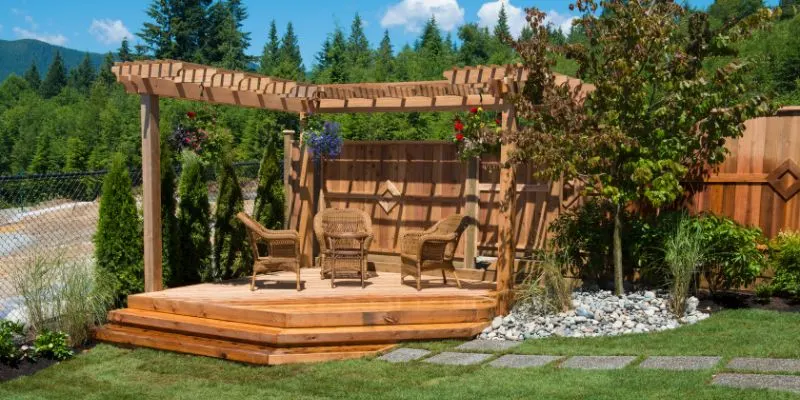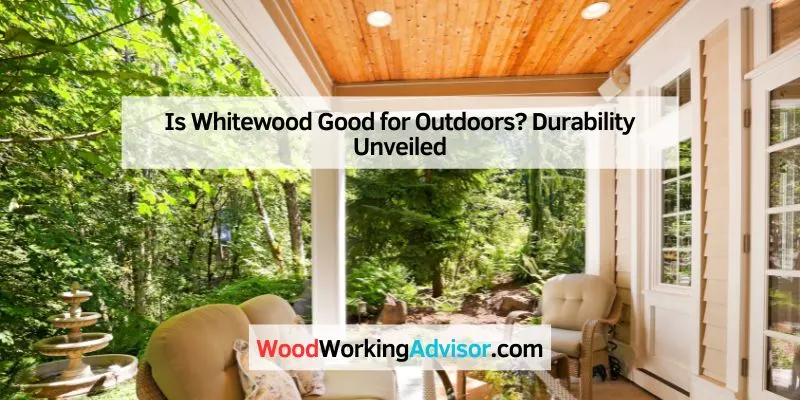Whitewood is not ideal for outdoor use due to its susceptibility to moisture and insects. It requires frequent maintenance to extend its lifespan.
Whitewood, often used in furniture and interior projects, has limited durability outdoors. Its lightweight and soft nature makes it prone to warping and decay when exposed to the elements. For outdoor applications, such as decks or garden furniture, choosing more durable woods like cedar or redwood is advisable.
These alternatives resist moisture and pests better than whitewood. While whitewood can be treated with sealants, these solutions often wear off over time, necessitating regular upkeep. Understanding the limitations of whitewood helps homeowners make informed choices for outdoor projects that require lasting performance and aesthetic appeal.
Introduction To Whitewood
Whitewood is a popular wood type, known for its light color and smooth texture. It comes from several species of trees, mainly in North America. This wood is lightweight, making it easy to work with.
The grain of Whitewood is straight and uniform, giving it a clean look. It can resist warping and splitting, which is great for outdoor use. However, it may need treatment to resist moisture and pests.
| Common Uses | Description |
|---|---|
| Furniture | Often used for tables, chairs, and cabinets. |
| Construction | Used for framing, decking, and outdoor structures. |
| Crafts | Popular for DIY projects and woodworking. |
Whitewood’s Popularity In Outdoor Projects
Whitewood is a popular choice for outdoor projects. It offers a comparative cost advantage over other wood types. Many people find it affordable and accessible.
Its aesthetic appeal attracts homeowners and builders alike. Whitewood has a light color that blends well with nature. This wood can easily be painted or stained to match any design.
| Feature | Whitewood | Other Woods |
|---|---|---|
| Cost | Lower | Higher |
| Aesthetic | Light color | Varies |
| Durability | Moderate | Varies |

Assessing Durability For Outdoor Use
Whitewood has some natural resistance to outdoor elements. It can withstand moisture and pests. This makes it a decent choice for outdoor projects.
Longevity is a concern with Whitewood. It may not last as long as other woods. Frequent maintenance is needed to keep it in good condition.
Choosing pressure-treated Whitewood can improve its durability. This treatment helps protect against rot and insects. For better performance, sealing the wood is also helpful.
Preventive Measures For Outdoor Application
To ensure Whitewood lasts outdoors, proper sealing and treating are essential. Use a high-quality waterproof sealant to protect the wood from moisture. This helps prevent warping and decay over time.
Choose a sealant that is UV resistant to guard against sun damage. Regularly check for signs of wear. Reapply sealant every one to two years for best results.
For routine maintenance, clean the wood with a gentle soap solution. This removes dirt and grime. Inspect for any cracks or splits and repair them promptly. Keeping Whitewood in good condition helps maintain its beauty and strength.
Case Studies: Whitewood In Action
Discover how Whitewood performs in outdoor settings through various case studies. Evaluate its durability and aesthetic appeal, revealing insights into its suitability for outdoor projects. Explore real-life applications that highlight Whitewood’s strengths and advantages in enhancing outdoor spaces.
Success Stories
Many people use whitewood for outdoor projects. It is lightweight and easy to work with. Some homeowners built beautiful decks using whitewood. These decks look great and last for years. Whitewood is also used for furniture. Many outdoor tables and chairs are made from this wood.
Challenges Faced
Whitewood can face some issues outdoors. It is not very resistant to moisture. This can lead to warping and decay. Some users noticed splitting over time. Regular maintenance helps to keep whitewood looking good. Using sealants can improve its durability.
Alternatives To Whitewood For Outdoor Use
Whitewood is often cheaper than both redwood and cedar. It can warp and rot quickly when exposed to moisture. Redwood is more durable and resists insects better. Cedar has natural oils that protect it from decay.
Here’s a quick comparison:
| Type of Wood | Cost | Durability | Insect Resistance |
|---|---|---|---|
| Whitewood | Low | Low | Poor |
| Redwood | High | High | Good |
| Cedar | Medium | Medium | Excellent |
Choosing the right wood depends on your budget and needs. Whitewood may save money but could cost more in repairs. Redwood and cedar provide better long-term value.

Expert Opinions
Carpenters and builders often recommend whitewood for outdoor projects. Its lightweight nature makes it easy to handle. Many appreciate its smooth finish, which helps with painting and staining. Whitewood is also cost-effective, making it popular for budget-friendly builds.
Some carpenters warn about its durability. Whitewood can be more prone to damage from weather. Proper treatment can enhance its lifespan. Using sealants or paints protects it from moisture.
Designers and architects value whitewood for its versatility. It can be shaped into various designs easily. Many enjoy using it for furniture and decor.
While it has many benefits, caution is needed. Choosing the right treatment is essential for outdoor use.
Making An Informed Decision
Choosing the right wood for outdoor projects is crucial. Whitewood is a popular option, but it has pros and cons. Consider your project’s needs before deciding.
Cost is an important factor. Whitewood is often cheaper than other woods. However, cheaper options may not last as long.
Durability is key for outdoor use. Whitewood can withstand some weather conditions. It may need regular maintenance to prevent damage.
| Feature | Whitewood | Other Woods |
|---|---|---|
| Cost | Lower | Higher |
| Durability | Moderate | High |
| Maintenance | Regular | Less Frequent |

Frequently Asked Questions
Is Whitewood Suitable For Outdoor Furniture?
Whitewood can be used for outdoor furniture, but it requires proper treatment. Without protection, it is prone to weather damage and decay. It’s advisable to use high-quality sealants and finishes to enhance its durability. Regular maintenance will help prolong its lifespan in outdoor settings.
How Long Does Whitewood Last Outdoors?
The lifespan of Whitewood outdoors varies with conditions. When properly treated, it can last up to five years. However, factors like moisture and sunlight exposure can significantly reduce its longevity. Regular maintenance can help extend its durability and performance.
Can I Use Whitewood For Decking?
Whitewood is not the best choice for decking. Its susceptibility to moisture can lead to warping and rotting. If you choose to use it, ensure it is treated with weather-resistant finishes. Consider alternative materials specifically designed for decking for better performance.
What Are The Benefits Of Using Whitewood Outdoors?
Using Whitewood outdoors offers several benefits. It is lightweight and easy to work with, making it ideal for DIY projects. Additionally, it has a smooth finish and can be painted or stained easily. However, proper treatment is essential for outdoor applications.
Conclusion
Whitewood can be a viable choice for outdoor projects if properly treated. Its lightweight nature makes it easy to handle, while its affordability is appealing. However, remember that maintenance is essential to prolong its lifespan. Ultimately, choosing the right wood depends on your specific needs and climate conditions.

